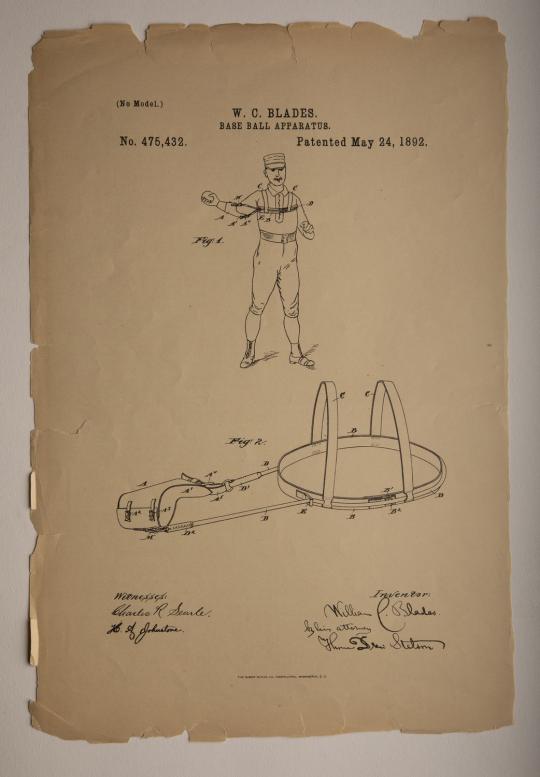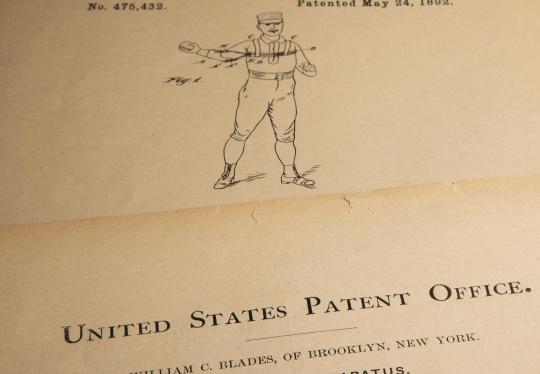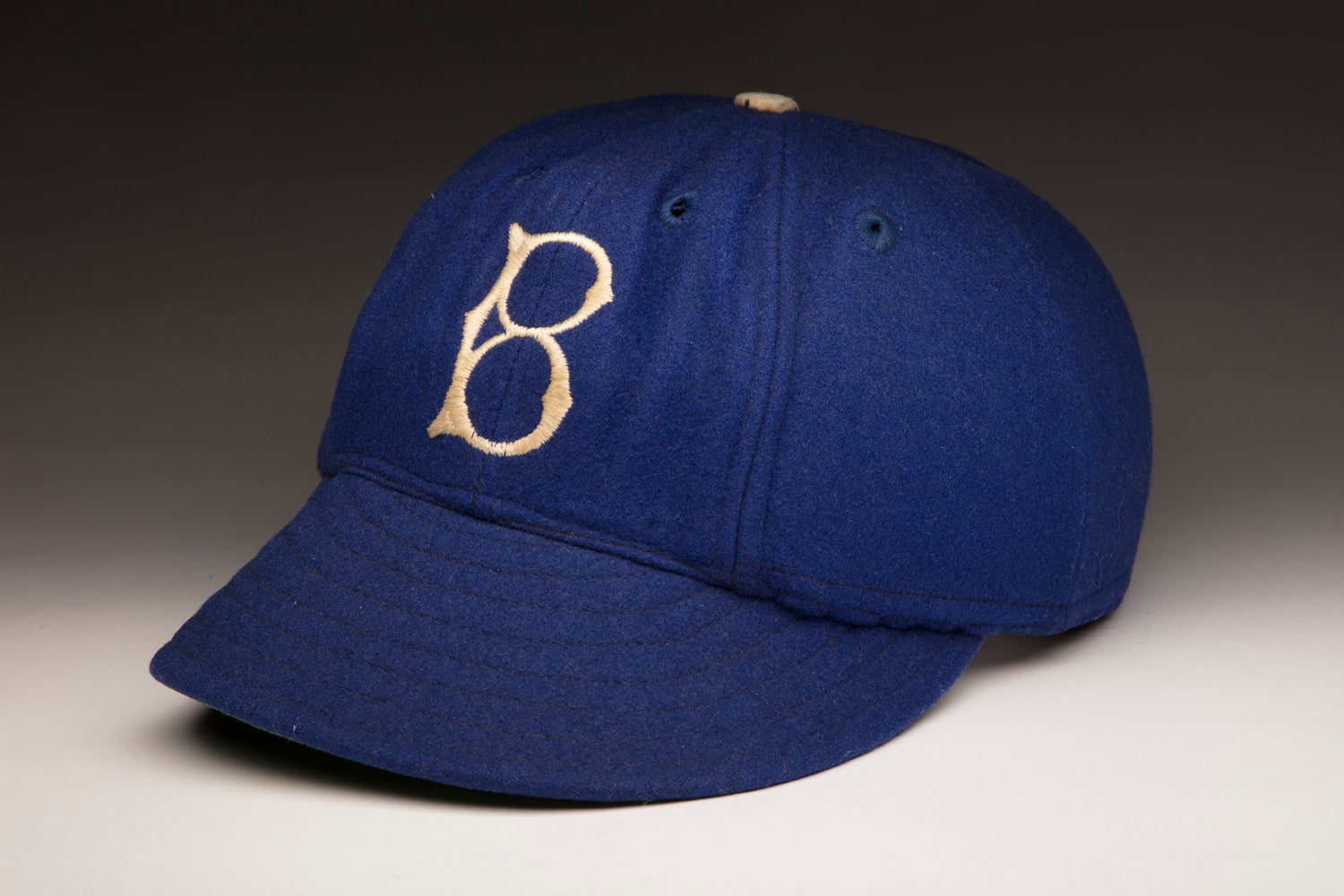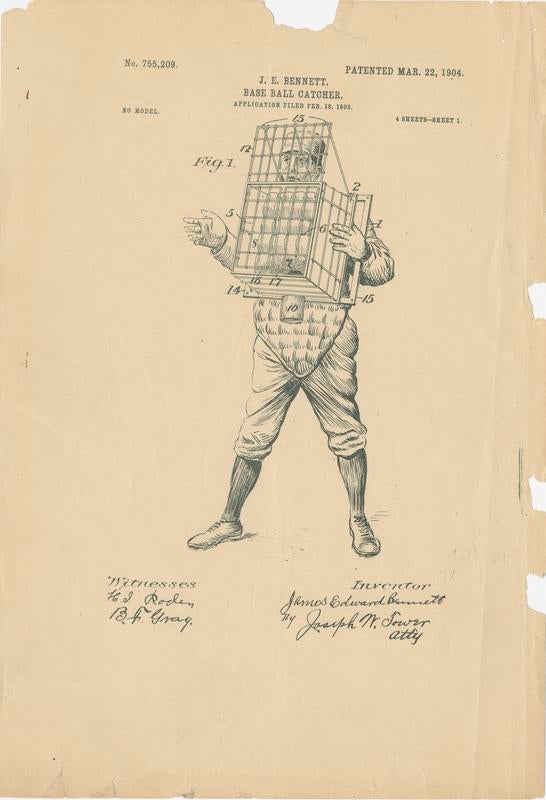- Home
- Our Stories
- #Shortstops: Patently amazing
#Shortstops: Patently amazing
An arm injury is a pitcher’s worst nightmare. Strained arm muscles from overuse can cause the pitcher to have a “dead arm,” which can derail their baseball career.
In today’s game, managers and pitching coaches try to prevent the pitchers from getting injured by limiting the pitches they throw in a game with a pitch count and using them in a five-day pitching rotation.
Official Hall of Fame Merchandise
Hall of Fame Members receive 10% off and FREE standard shipping on all Hall of Fame online store purchases.
In the early days of the sport, however, pitch counts and pitching rotations did not exist. Starting pitchers usually pitched the full nine innings of a ballgame, sometimes extra innings, and would pitch on short rest when the league pennant or the World Series was on the line.
In 1892, a man named William C. Blades came up with a solution to help alleviate the stress on a pitcher’s arm. His invention, the “base-ball apparatus” was patented on May 24 of that year, and was given the Patent # 475,432. The patent is three pages long and is preserved in the National Baseball Hall of Fame and Museum’s Library and Archives.
In the patent, Blades said that the object of his invention is to “relieve the right arm,” making his invention useful only to ballplayers who threw right-handed. The primary demographic for his invention is pitchers, but it “may be used by all the players.”
According to Blades, the apparatus is made of a “strong cuff of leather or other flexible material, having a tapering interior, adapted to fit on the forearm, a concave extension matching on the elbow at the exterior, a band extending around the chest of the wearer in or near the line of the shoulders, with provisions for holding it in place, and contractile springs connecting these parts on the front and back of the arm. These springs may be and preferably are in a single piece extending around the person, pulling with a nearly constant force on the cuff.”
The "base-ball apparatus" aimed to create tension in a pitcher's arm, thus fortifying their muscles and increasing comfort and efficiency. A patent for the invention is preserved at the National Baseball Hall of Fame and Museum. (Milo Stewart Jr./National Baseball Hall of Fame and Museum)
The tension that the apparatus caused, Blades said, would fortify the muscles, contribute greatly to the player’s comfort and efficiency, and enable the player “to subject his arm to great and repeated strains without injury.”
The last page of the patent contains two depictions. The first is of a player wearing the apparatus and the second is of the apparatus itself.
There is little other information on the "base-ball apparatus" and it is unknown if it was ever used by a professional baseball player.
Matthew Carter was a curatorial intern in the Hall of Fame’s Frank and Peggy Steele Internship Program for Youth Leadership Development






